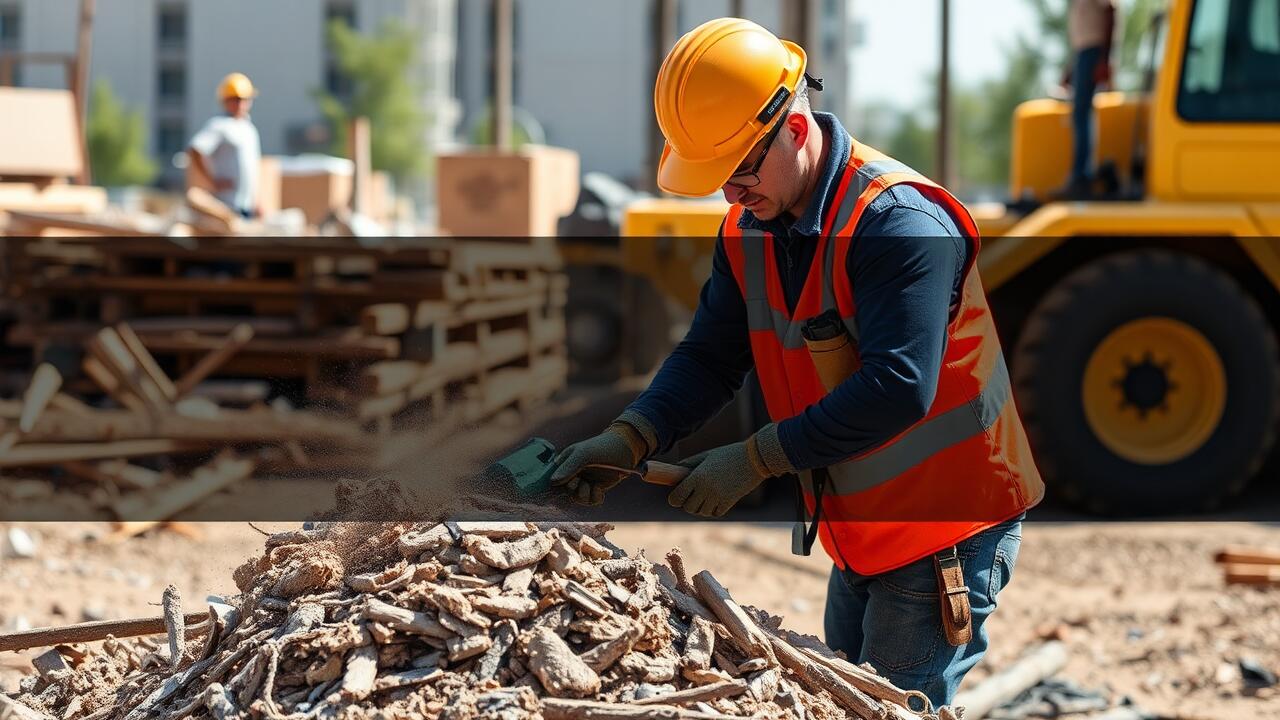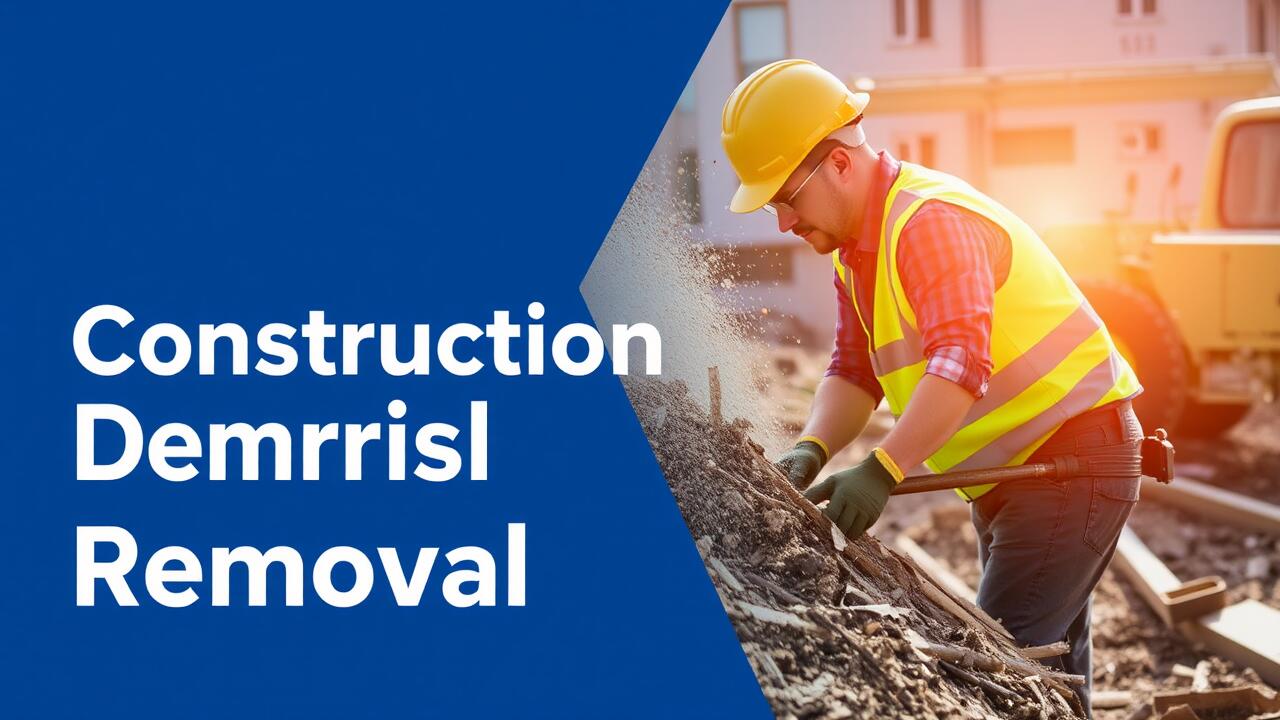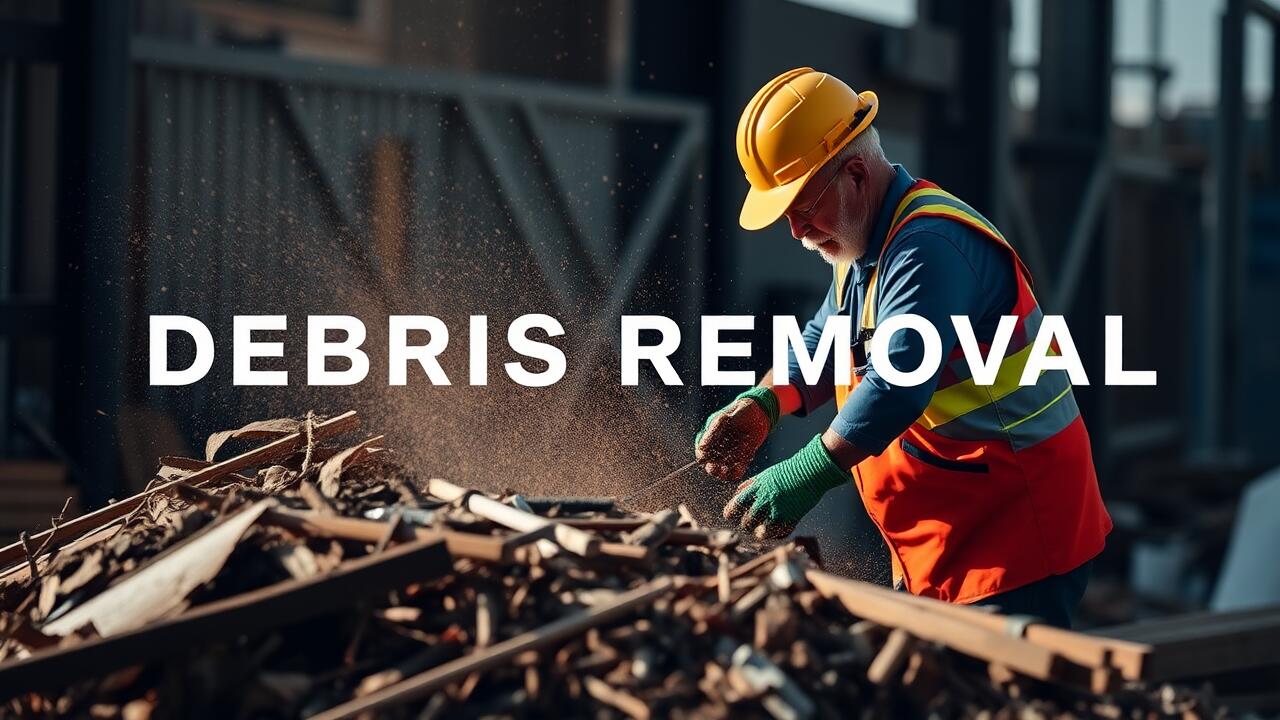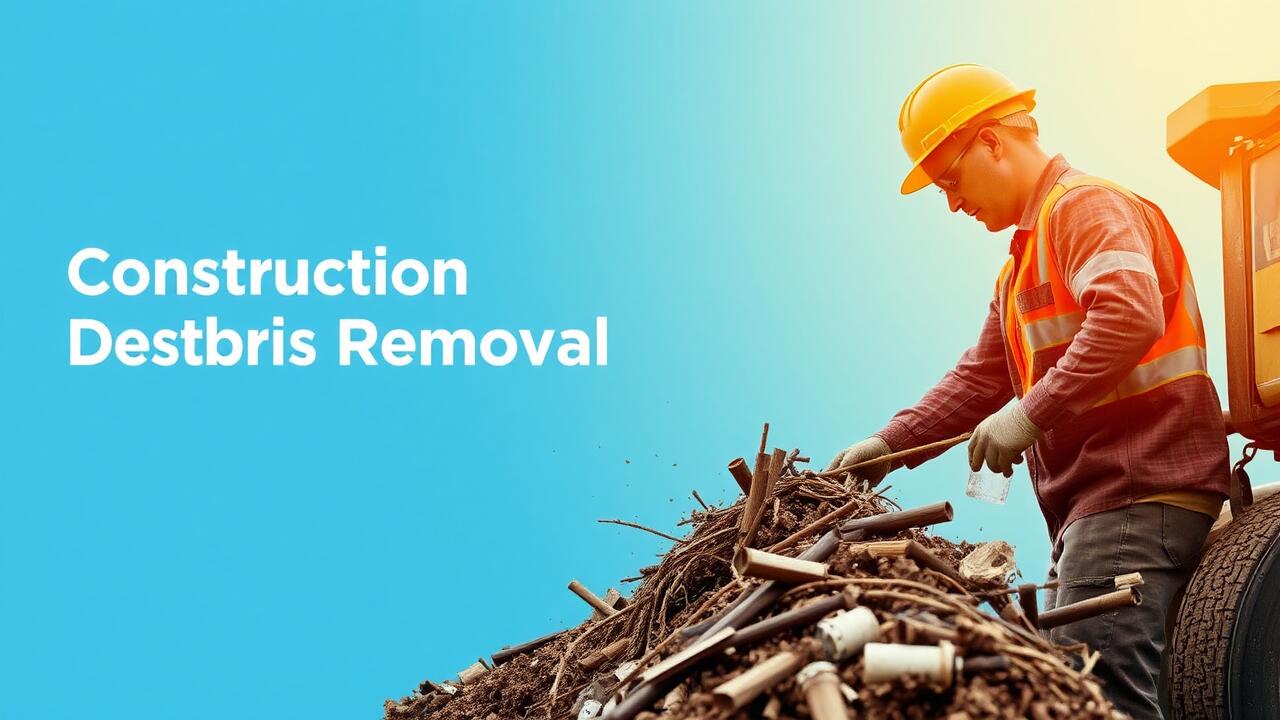
Recycling Non-Hazardous Construction Debris
Recycling non-hazardous construction debris plays a crucial role in sustainability within the construction industry. Many materials, such as wood, metal, and concrete, can be reprocessed and utilized in new projects. This recycling not only reduces the volume of waste sent to landfills but also conserves natural resources. The process often involves sorting materials on-site before transportation, allowing for efficient recycling practices.
Local services, such as Construction Debris Removal in South Mountain, Phoenix, are essential in facilitating this recycling effort. These services help contractors and homeowners manage their waste responsibly by ensuring that reusable materials are properly diverted from the waste stream. Utilizing these services can streamline the recycling process and promote a more sustainable approach to construction and renovation practices.
Benefits and Processes Involved
Recycling non-hazardous construction debris offers numerous benefits that contribute to environmental sustainability. This process not only reduces landfill waste but also recovers valuable materials that can be reused in new construction projects. By diverting debris from disposal sites, resources like wood, metal, and concrete can be repurposed, thus conserving natural resources and minimizing the need for virgin materials. Moreover, recycling can lead to cost savings for construction companies, as it often reduces disposal fees and may qualify for tax incentives.
The processes involved in recycling non-hazardous construction debris generally include collection, sorting, and processing. Initially, debris is collected and transported to a recycling facility. At the facility, materials are sorted based on type and condition, allowing for efficient processing. Techniques such as shredding, crushing, and screening are utilized to produce reusable materials. For residents and businesses in the area, services like Construction Debris Removal in South Mountain, Phoenix, facilitate this recycling journey by providing convenient options for disposal. This ensures that debris is handled responsibly and supports sustainable practices within the local community.
The Impact of Hazardous Debris on Health
Hazardous construction debris poses significant risks to both workers and the surrounding community. Materials such as asbestos, lead, and certain chemicals can be released into the air or soil during construction or demolition activities. Workers who come into contact with these substances may experience serious long-term health issues. Proper handling and disposal are crucial to minimizing exposure and ensuring safety on the job site.
An essential part of managing hazardous materials involves awareness and training for construction crews. Employers must implement safety protocols and provide protective equipment to reduce the risk of contamination. This is particularly important in areas undergoing Construction Debris Removal in South Mountain, Phoenix, where the presence of hazardous materials can endanger both workers and local residents. Regular monitoring and assessment of potential hazards are necessary to maintain a safe working environment.
Potential Health Risks for Workers
Workers in the construction industry often face exposure to hazardous materials found in debris, which can pose significant health risks. Materials such as asbestos, lead, and certain chemicals used in construction processes are particularly concerning. When these substances are disturbed during demolition or renovation, they can release harmful particles into the air. Inhalation of these particles may lead to acute respiratory issues, long-term lung damage, and other serious health problems. Proper handling and disposal of such materials are crucial to safeguarding worker health.
Furthermore, the effects of hazardous debris extend beyond immediate health concerns. Over time, exposure to toxic substances can increase the risk of chronic illnesses, including cancer and neurological disorders. Workers engaged in Construction Debris Removal in Estrella, Phoenix must be educated about the potential dangers and equipped with the necessary protective gear. Implementing strict safety protocols and regular training sessions can help mitigate these risks, ensuring that workers remain healthy while performing their essential duties.
Environmental Effects of Non-Hazardous Debris
The accumulation of non-hazardous construction debris can significantly impact the environment. This type of debris, which often includes materials like wood, concrete, and metals, contributes to landfill overflow and can lead to increased greenhouse gas emissions. When these materials decompose in landfills, they may release pollutants into the soil and groundwater, potentially affecting local ecosystems. Communities near construction sites may experience an increased demand for landfill space, leading to environmental strain and resource depletion.
Efficient management, such as Construction Debris Removal in South Mountain, Phoenix, can help mitigate these effects. By recycling non-hazardous materials, we can conserve natural resources and reduce the energy needed for new material production. This practice also lowers transportation emissions, as fewer trips to landfills are required. Implementing sustainable practices in the handling of non-hazardous debris not only supports local economies but also contributes to a healthier environment overall.
Assessing the Ecological Footprint
Evaluating the ecological footprint of non-hazardous construction debris involves examining how waste affects local ecosystems and resource consumption. This assessment considers factors such as the materials used in construction, waste generation during projects, and potential recycling initiatives. A significant amount of debris can contribute to landfill overflow, while effective management can lead to resource recovery. Practices such as reusing materials and recycling can dramatically reduce the environmental impact associated with construction activities.
In areas like South Mountain, Phoenix, Construction Debris Removal in South Mountain, Phoenix plays a critical role in mitigating adverse environmental effects. Local policies and community engagement foster an understanding of responsible waste management. Implementing sustainable practices helps minimize pollution and conserves natural resources. Ultimately, a thorough understanding of the ecological footprint promotes more effective waste management strategies within the construction industry.
FAQS
What is the difference between hazardous and non-hazardous construction debris?
Hazardous construction debris contains materials that can pose a risk to human health or the environment, such as asbestos, lead, or chemicals. Non-hazardous construction debris consists of materials that are not harmful, such as wood, concrete, and metals.
How can non-hazardous construction debris be recycled?
Non-hazardous construction debris can be recycled through various processes, including sorting, shredding, and reusing materials. Recycling facilities often accept items like concrete, bricks, and metals, which can be repurposed for new construction projects.
What are the health risks associated with hazardous construction debris?
Workers exposed to hazardous construction debris may experience serious health issues, including respiratory problems, skin irritation, and long-term conditions such as cancer, depending on the materials involved.
How does non-hazardous construction debris affect the environment?
Non-hazardous construction debris can have environmental impacts such as habitat disruption and increased landfill use. However, effective recycling can significantly reduce these effects by minimizing waste and conserving resources.
What steps can be taken to manage hazardous construction debris safely?
To manage hazardous construction debris safely, it is crucial to conduct a thorough assessment of the materials, utilize proper protective equipment, follow local regulations for disposal, and engage licensed professionals for handling and disposal of hazardous materials.




